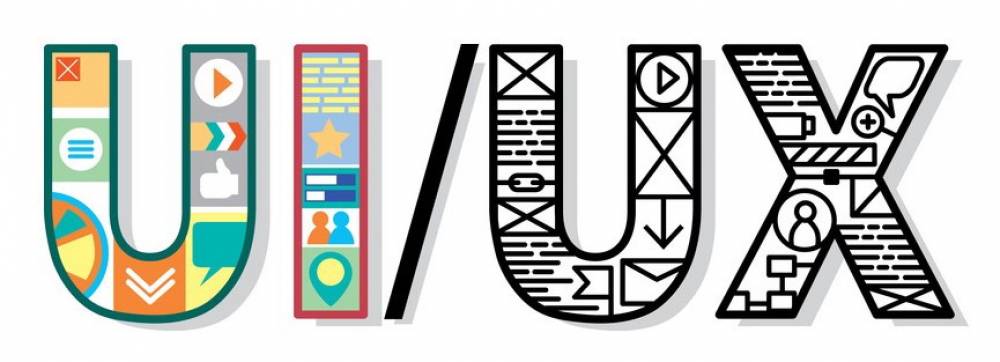
Everything You Need To Know About The UI/UX Designer Job Description
Everything You Need to Know About the UI/UX Designer Job Description
You've probably heard the terms UI designer and UX designer used interchangeably. The two are inextricably linked, as all computing digital products, including mobile apps, websites, and software programs, require work in both UI and UX design to be user-friendly. The UI/UX designer job title is a little ambiguous because the line between UI and UX is becoming increasingly blurred and employers are looking for individuals with a mix of UI/UX skills. UI/UX designers are unicorns who are equally adept at visualizing the product and conceptualizing the user experience design process. By ensuring that a product or service is aesthetically pleasing, user-friendly, and easily accessible, UI/UX designers breathe life into it.
Job Description of a UI/UX Designer: What Does a UI/UX Designer Do?
To illustrate what a UI/UX designer does, consider a simple restaurant analogy. A UI/UX designer is involved in every aspect of the restaurant setup process, from selecting dining tables, chairs, utensils, and décor (UI function) to service, food quality, music, lighting, and ambience (UX function).
A user interface/user experience designer acts as a liaison between an organization and its customers, representing the organization's ability to innovate. A UI/UX designer combines UI and UX functions to define a product's success by making it both useful and beautiful. A visually appealing food delivery app may be extremely difficult to use (say, ordering food requires 12 steps) and the functional design of the app may be unappealing. As a result, a good UI/UX designer achieves the optimal balance of UI and UX by comprehending end-user usability, the business context, and the expectations of various stakeholders. They are in charge of developing user interfaces that adhere to user requirements while also providing an intuitive and user-friendly experience. They design the user interface and conduct research on how the design should be structured using a variety of UX design techniques. A UI/UX designer's responsibility is to ensure that the product they create is simple to use and navigate. As a result, a UI/UX designer speaks in terms of both interfaces and experiences and is accountable for the following:
- Planning look and feel of each page or screen before it’s built
- The overall aesthetic appeal and experience of using the product
- How easily a user moves from one step to another in navigating through the product?
- How does a product feel?
- How a product is laid out?
- How does a user interact with the product?
Additionally, a UI/UX designer is responsible for ongoing monitoring and conducting multiple surveys/studies to ascertain user pain points, demographics, and motivations. Additionally, they collaborate with other team members to develop novel designs that adhere to the product's specifications. For instance, a user interface/user experience designer may collaborate with the customer success department to ascertain customer pain points and identify design gaps.
Responsibilities of a UI/UX Designer
- Assemble user requirements in collaboration with engineers and product managers.
- Employ a variety of ideation techniques, such as brainstorming, to address the user's needs and thus add value to the business.
- Investigate alternative design approaches for resolving specific user problems.
- Use sitemaps, storyboards, and process flows to demonstrate design concepts.
- Utilize cutting-edge design innovations to ensure that the product is technologically advanced.
- Define task flows and interaction models for users.
- Create a unified style guide to ensure that the product's design language is consistent.
- Carry out user research
- Develop user personas
- Conduct competitor and customer analysis.
How can I get my foot into the field of UI/UX design?
UX design is the fifth most in-demand skill for 2020, according to LinkedIn. At the time of this writing, there are approximately 12000 UI UX designer jobs available worldwide, and demand is expected to increase over the next decade as the demand for digital products continues to grow. The demand for UI/UX designers is increasing and is unlikely to decrease anytime soon, as organizations scramble to find unicorns capable of assisting them in improving end-user experience related to web and visual design.
Pursuing a career as a UI/UX designer can be difficult, but is absolutely possible with the assistance of a comprehensive upskilling program. Springboard's comprehensive UI/UX design career track teaches individuals how to develop fundamental UI skills and then combine them with the fundamentals of UX design to create a fantastic product. Springboard's online UI/UX design program emphasizes a more hands-on approach to concepts such as wireframing, conducting user research, and creating user personas. Ideally, as part of this course, you'll develop a UI UX designer portfolio that you can show prospective employers to demonstrate your UI/UX design skills and accomplishments. According to a popular Chinese proverb, "the optimal time to plant a tree was twenty years ago." The second best time is right now.” Do not be afraid. Do not be intimidated by UI/UX design. The time to act is now to acquire the necessary skills to launch a career as a UI/UX designer.

